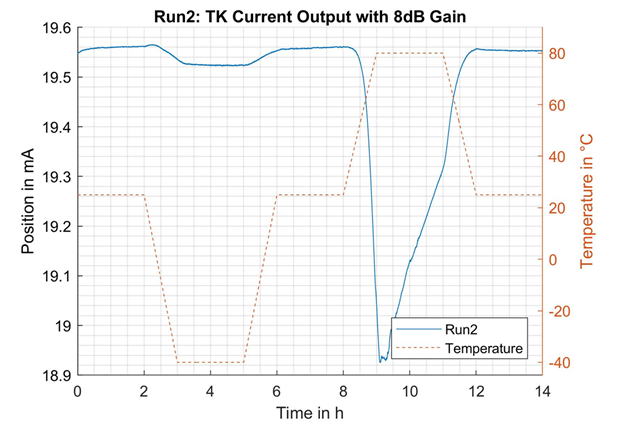Other Parts Discussed in Thread: TIPD155
Tool/software:
Hello Team,
can you please help:
I have been working with the XTR300 component for a few days now and would like to know which TK
I can assume for this component.
In the data sheet I find these entries:

We would like operate the XTR300 in a temperature range from -40 to 80°C with up to 21mA
in a temperature range of -40 to 80°C.
Is it correct that I have a TC of up to (Delta T = 120°C) 1200ppm over the temperature range in the WC?
over the temperature range?
The RGAIN is
10k 0.1% 25ppm
Do you know measures to counteract this?
My first measurement looks like this:
- The minimum value 18.924mA
- The maximum value is 19.565mA
- Is the deviation of 640µA within the spec?





